On the afternoon of March 25, the National Key Laboratory of Crop Genetic Improvement (NKLCGI) held an exhibition on “The Achievements of ‘Genome Research and Rice Genetic Improvement’ Innovation Team”, marking its 30th founding anniversary. Together with this display, the Black Rice Tasting was launched as well simultaneously, attracting nearly 500 visitors in total.
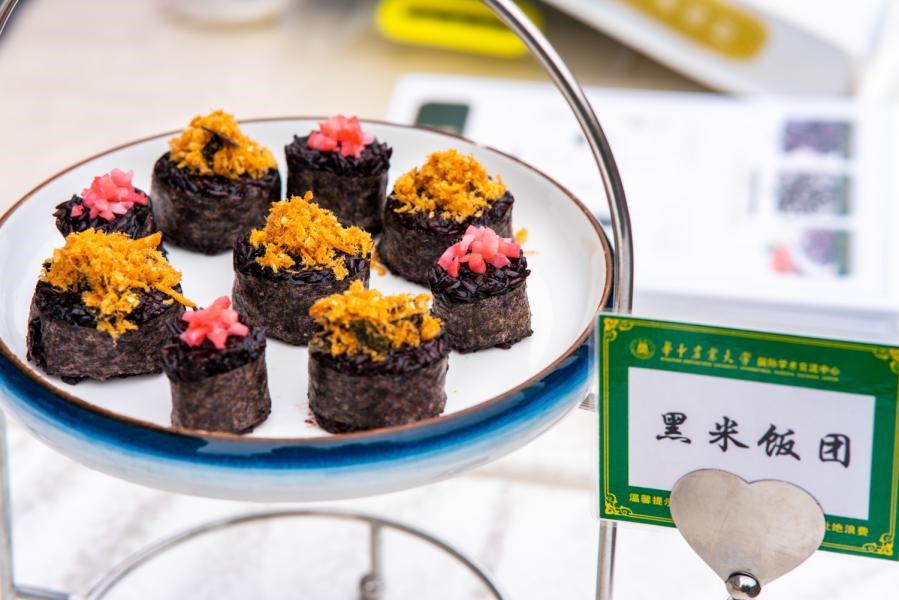
Sushi made of black rice “Huamoxiang”
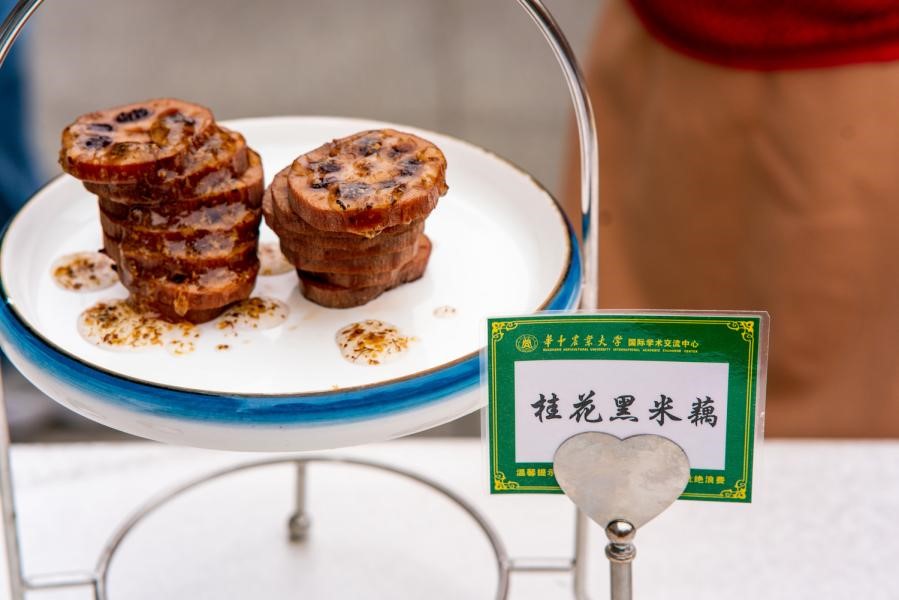
Osmanthus black rice lotus root
The square outside the NKLCGI was buzzing prior to the event, teeming with an array of “Huamoxiang” black rice delicacies——from osmanthus black rice lotus root, to black rice cake, black rice spring roll and black rice sushi——all beautifully crafted and displayed in such a way that drew in a crowd of teachers and students, who couldn’t help but stop and appreciate the vivid colors of the food. The members of rice team and volunteers provided shaomai and black rice juice for visitors to taste. Soon after, participants joined the queue in increasing numbers. After trying the black rice shaomai, Miao Yuanmei, a graduate student in Crop Breeding Class 2207, couldn’t stop raving about it: “This shaomai is way better than the regular one; it’s softer, more glutinous and sweeter, making it extremely enjoyable. The black rice juice is also so smooth and delicate in texture that I simply love it.”
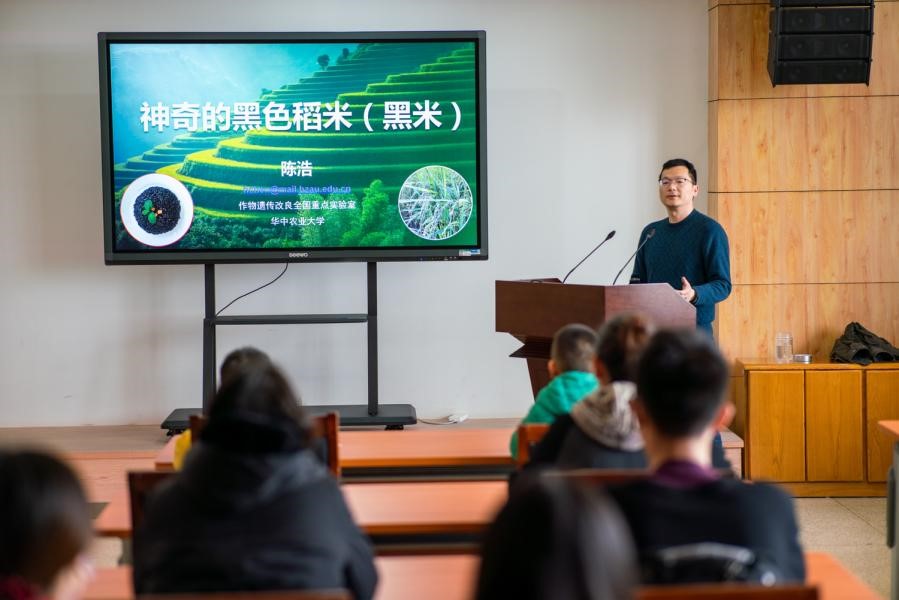
Prof. Chen Hao gives a science lecture
Professor Chen Hao, from College of Life Science & Technology, delivered a report entitled “Fantastic Black Rice” at the C602 conference hall of NKLCGI. “To realize the goal of Healthy China, we advocate the whole-grain-oriented diet”, he said. The milled rice, composed of protein and a small amount of starch, loses nearly 80% nutrients in the processing. According to him, “Only consuming the whole grain except its hulls, can we absorb the most of nutrients”. Later, he added that studies based on animal model suggested anthocyanins rich in black rice could control blood sugar and blood lipid, at the same time, have antioxidant and anticancer biological effects. Therefore, black rice has great potential to become healthy staple food.
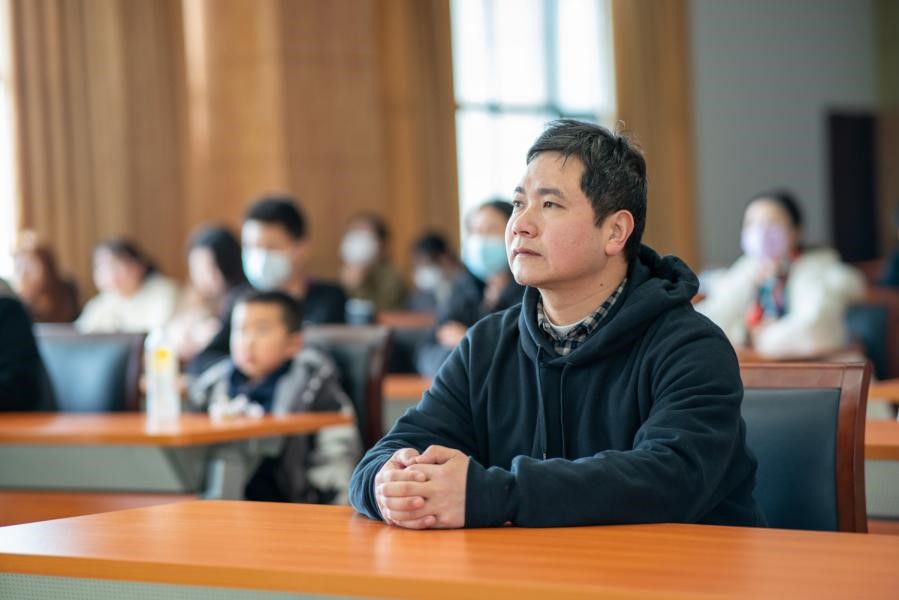
Audience listen to the lecture carefully.
Chen stressed that the delicious black rice is a key to exploring the nutritional value of rice. By increasing the proportion of water, protein, grease and dietary fiber while decreasing starch content in black rice, Academician Zhang Qifa and his team bred a new black rice variety “Huamoxiang”, which boasts not only high yield, strong adaptability, and good disease resistance, but also a lustrous appearance, sweet aftertaste, and excellent cooking quality and tastiness. “Applying Genomic Precise Nutrition to disease prevention and control demonstrates the concept of Great Health. Genetic inheritance, food nutrition, life style and medical care are four pillars of health, ” Chen said .
At the square on the ground floor, there was a display table featuring an article by Zhang Qifa titled “Ensuring food security and promoting nutrition and health: Making black rice staple food for the future”, which was published in the Journal of Huazhong Agricultural University. Impressed by the article, visitors exchanged their ideas with relatives or students. In terms of planting mode, the rice team developed a green cultivation path characterized by “Rice-Duck-Crayfish Model”, namely, “Double Water and Double Green” agrosystem. As the head of research team on making black rice staple food, Academician Zhang expected that the rice is not the only “provider” of human energy, but a “guardian” that protects public health. “Black Rice bears our pursuit of nutrition and health. Hope we can join hands to create food beneficial to human beings and the world,” he encouraged.
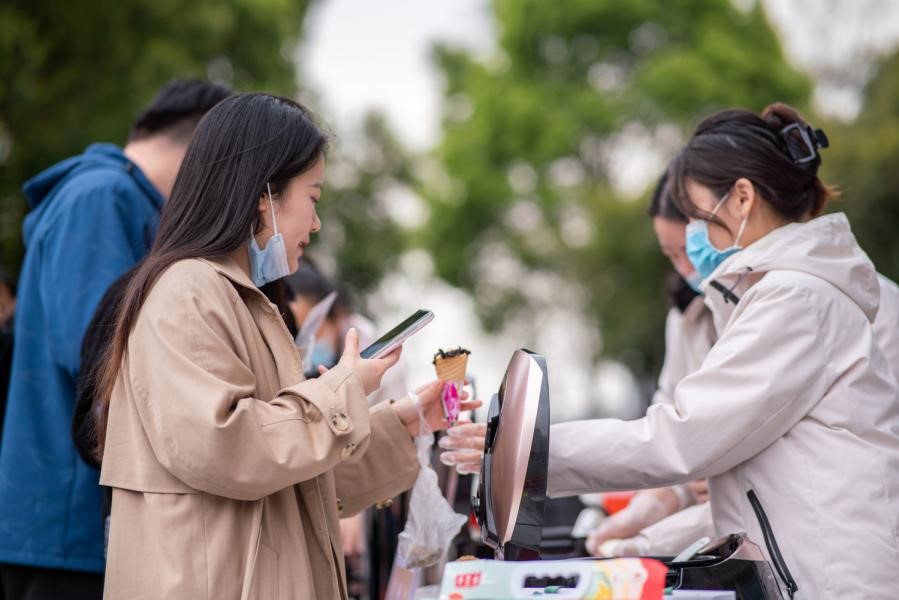
Students take a photo of “hot ice-cream”
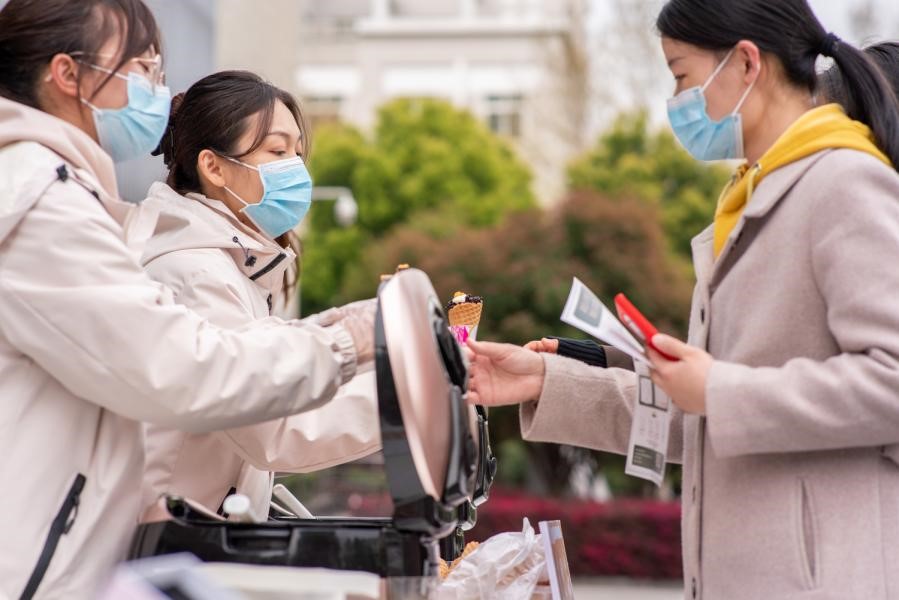
Exhibitor makes “hot ice-cream” (Photo/Tang Haixin Zhou Jiajian)
Laboratory Public Open Week was one of the series of activities marking the 30th founding anniversary of the NKLCGI. From March 25 to March 28, participants will have an access to the laboratory and engage in other various activities successively, including displays on the diversified corn germplasm, multi-function utilization of rapeseed, cotton crafts and classic examples of laboratory notebooks. Meanwhile, visitors will also experience the process of popcorn making, spinning wheel operation and rape bolt tasting.
Source: http://news.hzau.edu.cn/2023/0327/65979.shtml
Translated by Liu Bangyan
Supervised by Jin Bei
